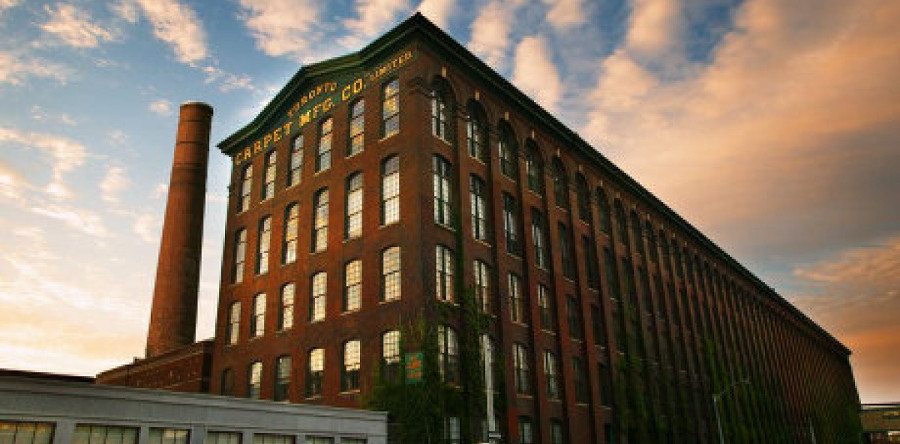When Danny Roth was looking to start his communications business 11 years ago, he opted for 600 square feet of statement — a fourth-floor office with soaring ceilings and exposed-brick walls in Liberty Village’s historic Carpet Factory.
“I think I had the smallest office in the building, and I shared it with a marketing firm for the first year,” says Roth, who has since added four staff and doubled his Brandon Communications space.
“I looked at office space in North York and downtown, but the bones of the place made a statement about the business we wanted to be.”
Back then, Liberty Village was a relative unknown. There were almost no condos, coffee shops or restaurants. In fact, Roth only really knew about the area because of his father-in-law, developer Bobby Eisenberg, who believed the former industrial area had the potential to become one of Toronto’s premier work-live-playgrounds.
And it has, according to a new report by commercial real estate brokerage CBRE Ltd.
All those historic, brick-and-beam factories and warehouses that first drew tech and creative industries to the “fringe” westerly part of the downtown — Liberty Village and the area around King St. W. and Spadina Ave. — have seen rents, and demand, creeping up to within range of the Class A financial district towers.
“The challenge is no longer attracting tenants to the Downtown West, but finding space for the existing tenants who want to grow and those who are looking to enter the market,” says Masha Dudelzak, CBRE’s head of research for the GTA.
“Downtown West and Liberty Village are no longer simply low-cost alternatives to the financial core — they are sought-after office markets in their own right,” says Dudelzak, author of a new report titled Downtown Fringe Neighbourhoods Redefine Downtown Office Markets.
A lot of attention has focused on the downtown building boom — the seven million square feet of office space now under construction in the core, it notes. But that has overshadowed the shift to adjacent neighbourhoods, a phenomenon that has also taken place in markets like New York’s Midtown and Boston’s Seaport.
Back in the fourth quarter of 2002, the average asking rent in west-end brick-and-beam buildings was $16.12 per square foot, according to CBRE. As of the second quarter of this year, average asking rents had climbed almost 38 per cent, to $22.23 per square foot.
Towers in the financial core, by comparison, have increased 14 per cent in the same period, from $28.40 per square foot to $32.38, says the report.
“Back then, rents were cheaper because nobody wanted to be there,” says Dudelzak. “It was seen as far away from the core, there weren’t any amenities and it was pretty derelict.”
But what started out, in large part, as incubator facilities for small or fledgling companies have expanded to the point where, two years ago, the westerly fringe hit a turning point — vacancy rates in Downtown West and Liberty Village fell below those in the financial core.
They remain that way, with a vacancy rate in Downtown West/Liberty Village of 4.1 per cent as of the second quarter of 2014, compared to 5.9 per cent in the Class A financial towers, says Dudelzak.
As a result, developers have been amassing land for new office projects outside the core in what have traditionally been historic areas. But they are “unique buildings” with the right mix of hip and cool offerings to meet the expectations of these fringe-market companies and their largely young employees, says Dudelzak.
“Personally, I think the east is next,” says Dudelzak, noting that the Pan Am Games could be the catalyst for similar redevelopment of the few old warehouses and factories that have yet to be converted east of the downtown.
CBRE’s findings point to a pressing problem in the Toronto market as once-affordable office space in these fringe neighbourhoods becomes far less so, says Iain Dobson, who has authored a number of reports looking at issues in the city’s office market.
“We’re just not creating enough entry-level office space for start-up and innovative small companies. It’s a pressing public policy issue.
“There are fabulous new businesses starting up all over the city and they need affordable places to grow.”
Source: The Star








2 Responses